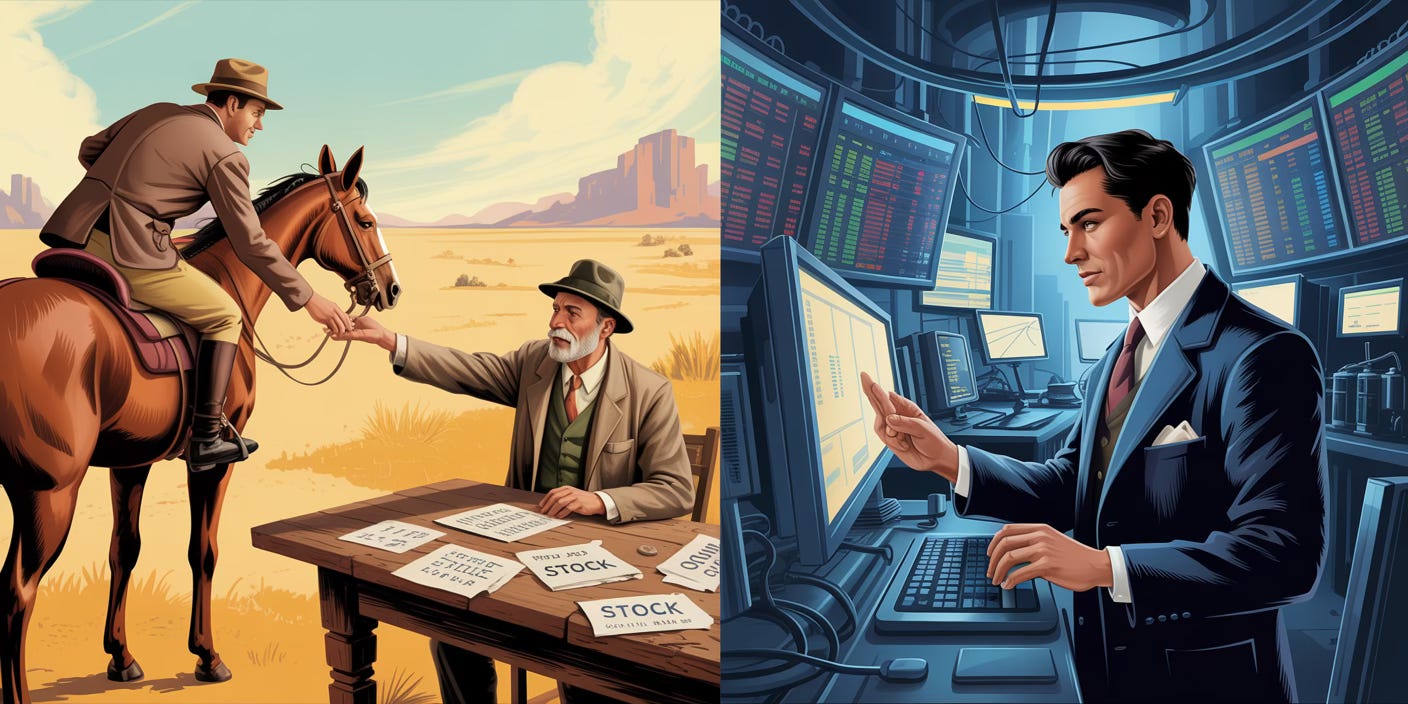Stop Comparing Today’s Markets to the 1920s
It’s Not Even Remotely the Same World
Every time someone brings up “the roaring 1920s” as a parallel to today’s market, I cringe.
They’ll post some chart showing a trend line or some statistic from before 1929 and say, “See? History repeats.”
But since then, the entire structure, data, and behavior of markets have changed beyond recognition.
1. The Market Structure Is Completely Different
In the 1920s, there were no ETFs, no options market, no algorithmic trading, and no electronic exchanges.
Today’s market is dominated by:
High-frequency trading
Derivatives that dwarf the size of the underlying market
Passive index funds controlling half of U.S. equities
24/7 global liquidity
Instant execution times
2. Information Flow Has Evolved
In 1928, people read about news the next day in the newspaper.
Today, markets move on a single tweet in seconds.
AI models digest macro releases, trading bots react before humans even read the headline.
In the past it could take weeks for sentiment to shift.
Now, one CPI print or Fed speech flips positioning across the globe in hours.
3. The Market Participants Are Not the Same
Back then: mostly individuals and small pools of capital.
Now: sovereign wealth funds, hedge funds, quant shops, insurance portfolios, pensions, retail algos, and passive flows.
You’re not trading against people riding horses anymore, you’re trading against systematic strategies, structured products, and other models.
4. Monetary Policy Didn’t Exist Like It Does Now
The Federal Reserve of the 1920s didn’t target asset prices or liquidity.
QE, QT, balance sheet expansion…none of it existed.
Comparing 1929’s crash to a Fed-controlled market is like comparing a bicycle to a Formula 1 car.
5. Valuation Metrics Have Changed
Accounting standards, buybacks, inflation measurement, interest rates, and global capital flows have all evolved.
Price-to-earnings ratios in the 1920s meant something totally different. There were no GAAP rules, and companies didn’t even report quarterly earnings consistently.
Today’s “high valuation” isn’t the same thing. It’s supported by technology margins, global demand, and a flood of central bank liquidity.
6. Technical Signals Don’t Translate Across Eras
Every time someone overlays a 1929 chart on today’s S&P 500, a serious analyst dies a little inside.
Back then, volume, volatility, and liquidity data were primitive.
You can’t compare RSI, moving averages, or Bollinger Bands when:
Data frequency is completely different
Market hours, tick sizes, and execution mechanisms have changed
Most trades now are arbitrage, hedging, or synthetic exposures
It’s not just apples to oranges…it’s apples to quantum physics.
7. Even the 1980s Aren’t Comparable
Honestly, I don’t even consider the 1980s “the same market.”
That era barely had electronic trading, no VIX, no ETFs, no systematic volatility targeting, and minimal global integration.
Portfolio insurance had just been invented.
When I backtest, I rarely go beyond 1990, because that’s the first time the data and structure start resembling today’s world as it was the beginning of liquid index futures, consistent reporting, electronic execution, and a functional volatility market.
Anything before that might be historically interesting, but analytically? It’s noise.
8. The Global Context Is Unrecognizable
In the 1920s, the U.S. was an emerging industrial superpower with limited international capital flows.
Today, everything is interconnected: Japan’s yield-curve tweak moves the Nasdaq.
Capital is global, leverage is hidden in derivatives, and risk transmission is instant.
There is no “isolated” market crash anymore.
Save The Comparisons for Your Dinner Party
The 1920s analogy sounds smart at dinner parties, but what we trade today isn’t even the same species as the one in 1929.


